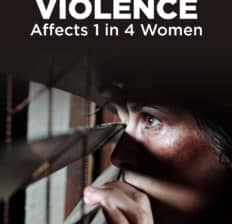This Dr. Axe content is medically reviewed or fact checked to ensure factually accurate information.
With strict editorial sourcing guidelines, we only link to academic research institutions, reputable media sites and, when research is available, medically peer-reviewed studies. Note that the numbers in parentheses (1, 2, etc.) are clickable links to these studies.
The information in our articles is NOT intended to replace a one-on-one relationship with a qualified health care professional and is not intended as medical advice.
This article is based on scientific evidence, written by experts and fact checked by our trained editorial staff. Note that the numbers in parentheses (1, 2, etc.) are clickable links to medically peer-reviewed studies.
Our team includes licensed nutritionists and dietitians, certified health education specialists, as well as certified strength and conditioning specialists, personal trainers and corrective exercise specialists. Our team aims to be not only thorough with its research, but also objective and unbiased.
The information in our articles is NOT intended to replace a one-on-one relationship with a qualified health care professional and is not intended as medical advice.
Domestic Violence Statistics Show Alarming Global Problem
March 16, 2022

Data capturing the experiences of 2 million women globally highlights the concerning prevalence of intimate partner violence, especially for young adults. These domestic violence statistics suggest that intimate partner violence was already highly prevalent across the globe, even before the past two years.
A February 2022 study published in The Lancet found that one quarter of women around the world, ages 15–49, are estimated to have experienced physical and/or sexual abuse, or intimate partner violence, in their lifetimes. These reports show that domestic violence is a major mental and physical health concern worldwide.
Domestic Violence Statistics
The Lancet’s study on global domestic or intimate partner violence used data from 366 eligible studies, capturing the responses of 2 million women from 161 countries, covering 90 percent of the global population of females ages 15 and older. Researchers found that 27 percent of women between the ages of 15–49 years are estimated to have experienced physical or sexual abuse, or both, or intimate partner violence in their lifetimes.
Of those reported experiences, 13 percent occurred in the past year before they were surveyed.
Data indicates that this type of violence starts early, affecting 24 percent of adolescent girls and young women ages 15–19 and 26 percent of women ages 19–24, who say they’ve experienced violence at least once since the age of 15.
Reports also highlight the regional variations that exist, with “low-income countries reporting higher lifetime and, even more pronouncedly, higher past year prevalence compared with high-income countries,” according to researchers.
The study authors state that “governments are not on track to meet the Sustainable Development Goals targets on the elimination of violence against women and girls, despite robust evidence that intimate partner violence can be prevented.”
Signs of Abuse
The violence analyzed in the study refers to physically, sexually and psychologically harmful behaviors in the context of marriage, cohabitation and any other form of union, as well as emotional and economic abuse and controlling behaviors.
According to the National Coalition Against Domestic Violence (NCADV), anyone can be an abuser, and the majority of abusers are only violent with their current or past intimate partners. One study found that 90 percent of abusers do not have criminal records and are generally law-abiding citizens outside of the home.
The NCADV indicates that an abuser often denies the existence of abuse or minimizes the seriousness to the victim and other family members. An abuser commonly objectifies the victim (seeing her as his property) and blames his violence on circumstances like stress, a “bad day” or the victim’s behavior.
PTSD symptoms have also been connected to intimate partner violence. An abuser may also come off as pleasant or charming to others and may internalize feelings of being inadequate or powerless in the world.
Reg flags or signs of abuse include, but are not limited to, the following:
- Possessiveness and/or extreme jealousy
- Extremely controlling behavior
- Verbal abuse
- Forced intimacy or sex, or disregard for partner’s unwillingness to have sex
- Sabotage or obstruction of the victim’s ability to work, attend school or socialize outside of the relationship
- Preventing relationships with friends, family and peers
- Accusations of the victim having an affair or flirting with others
- Control of how the victim acts or what she wears
- Demeaning behavior, belittling the victim or humiliating her in public
- Harassment at the victim’s workplace, school or home
- Using intimidation with weapons
Support and Help
If you feel that you’re being abused or harassed, reach out to the National Domestic Violence Hotline at 1-800-799-7233 (SAFE) or 1-800-787-3224 now. Your call will remain anonymous and confidential, and help is available 24/7.
You can also text “START” to 88788 or visit the National Domestic Violence Hotline website, which provides a link to local resources for support.
Conclusion
- The Lancet’s recent study captured worldwide domestic violence statistics regarding intimate partner violence, which used data from 366 eligible studies, capturing the responses of 2 million women ages 15 years and older.
- Researchers found that 27 percent of women between the ages of 15–49 years are estimated to have experienced physical or sexual abuse, or both, or intimate partner violence in their lifetimes.
- Some red flags or signs of abuse include extreme jealousy, forced sex or intimacy, controlling behavior, verbal harassment, using intimidation with weapons, and preventing other relationships.
- If you’re being abused and need help, use the National Domestic Violence Hotline at 1-800-799-7233.











